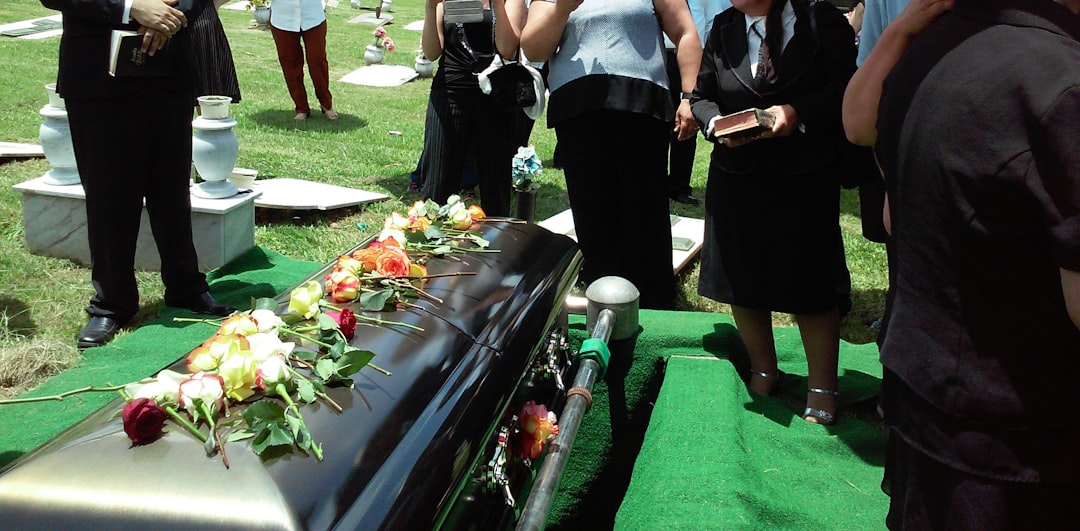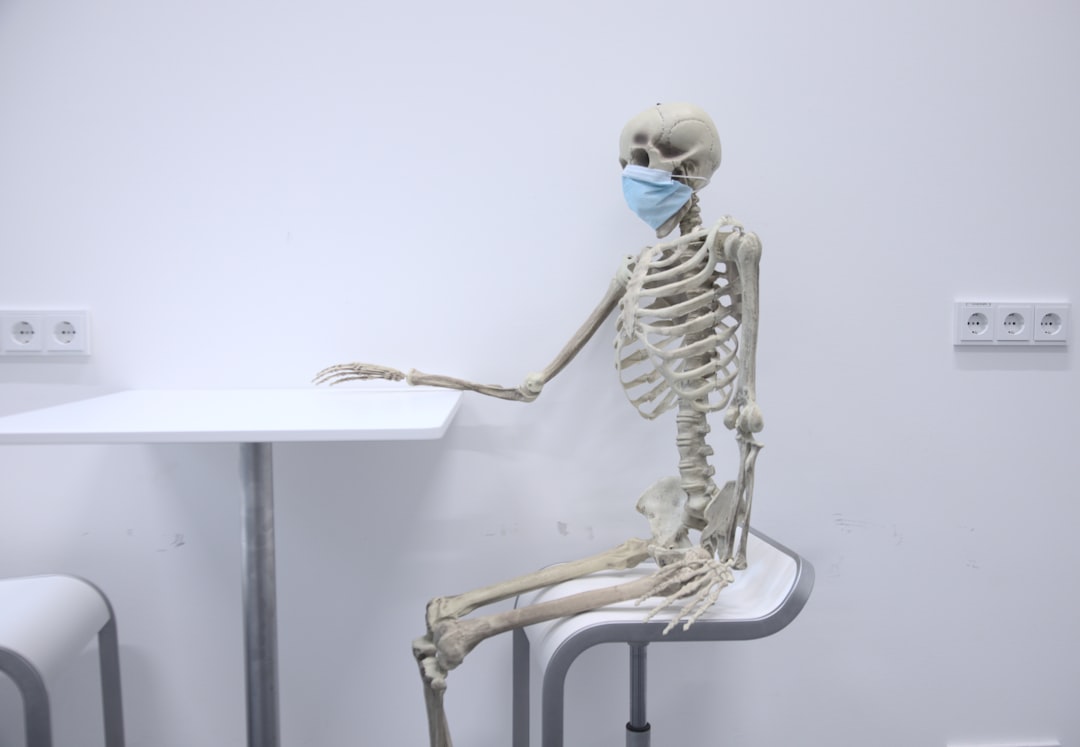

Loss of consortium is a legal term that refers to the deprivation of the benefits of a family relationship due to injuries caused by a third party. Originally stemming from common law, this concept typically applies to the spousal relationship but can extend to parent-child relationships in some jurisdictions. The essence of loss of consortium claims is rooted in the recognition that personal injuries impact not only the injured individual but also their close family members who suffer collateral damage.
Historically, loss of consortium claims were predominantly filed by wives seeking compensation for the loss of their husbands' companionship and support. Over time, these claims have evolved, and now both spouses can seek redress for such losses. In some areas, even children may claim loss of consortium if they are deprived of parental guidance and affection due to a parent's injury.
The damages awarded for loss of consortium are non-economic and aim to compensate for intangible losses that do not have a direct financial cost. These might include loss of love, companionship, comfort, care, assistance, protection, affection, society, moral support, sexual relations (in cases involving spouses), and solace. Given the subjective nature of these experiences, quantifying such losses poses significant challenges for courts and juries.
To succeed in a loss of consortium claim, several elements must be established. Firstly, there must be proof that a valid marriage or familial relationship existed at the time of injury. Secondly, it needs to be demonstrated that the third party's negligent or intentional actions directly resulted in significant injuries to one party within this relationship. Finally, evidence must show how these injuries tangibly impacted the non-injured spouse or family member's ability to enjoy their relationship as before.
The rationale behind recognizing loss of consortium claims lies in acknowledging the profound interconnectedness within family units. When one member suffers severe harm due to another's negligence or wrongdoing, it inevitably reverberates through those closest to them. Legal systems thus provide an avenue for addressing these far-reaching impacts beyond mere physical injuries.
Critics argue against expansive interpretations of loss-of-consortium claims on grounds that they could lead to excessive litigation and inflated damage awards based on inherently subjective experiences difficult for courts consistently evaluate across cases.
In summary, loss-of-consortium addresses real yet intangible repercussions felt by individuals closely connected with someone who has endured serious injury caused by external parties' actions-underscoring broader societal recognition toward comprehensive justice encompassing more than just physical or financial detriments incurred directly from incidents themselves
Loss of consortium is a legal concept that addresses the deprivation of the benefits of a family relationship due to injuries caused by a tortious act. This claim is typically brought by the spouse or close family members of an individual who has been injured or killed as a result of another party's negligence or wrongful conduct. Understanding the legal basis for loss of consortium claims requires an exploration of its origins, statutory framework, and judicial interpretations.
The roots of loss of consortium claims can be traced back to common law, where historically, such claims were predominantly recognized in cases involving husbands. The rationale was that wives were considered chattel, and their incapacitation represented a loss akin to damage to property. However, over time, with evolving societal norms and gender equality movements, courts began recognizing that both spouses could suffer from deprivation when their partner is injured.
In contemporary legal systems, the claim for loss of consortium encompasses various elements central to marital relationships: emotional support, companionship, affection, sexual relations, and household services. The injury causing these deprivations must be directly linked to the defendant's negligent or intentional actions. For instance, if a car accident caused by reckless driving results in one spouse becoming severely disabled, the other spouse may file a loss of consortium claim against the at-fault driver.
Statutory frameworks provide further clarity on how these claims are processed within different jurisdictions. Many states have codified provisions explicitly allowing for such claims within personal injury statutes. Nevertheless, there are variations in how jurisdictions handle them; some allow only spousal claims while others extend this right to children or parents under specific circumstances.
Judicial interpretation plays a critical role in shaping the contours of loss of consortium claims. Courts scrutinize various factors before awarding damages: the extent and permanence of the injury sustained by the victim-spouse; pre-existing conditions affecting marital harmony; and tangible evidence demonstrating significant impacts on daily life and relational dynamics. Additionally, courts often emphasize that these damages are non-economic in nature-meaning they compensate for intangible losses rather than direct financial costs like medical expenses.
A landmark case often cited in discussions about loss of consortium is Hitaffer v. Argonne Co., which marked one of the first instances where U.S. federal courts acknowledged that wives also had grounds to seek compensation for loss associated with their husband's injuries-a significant shift towards gender parity within this domain.
Despite its recognition across many legal systems globally, there are still challenges inherent in proving and quantifying such claims given their subjective nature. Unlike medical bills or lost wages which can be calculated objectively with receipts or pay stubs as evidence-losses related to companionship require compelling testimony regarding changes endured within intimate aspects unique to each marriage.
In conclusion, understanding the legal basis for loss of consortium involves appreciating its historical evolution from common law concepts through modern statutory enactments coupled with nuanced judicial interpretations reflecting contemporary values around family dynamics and shared sufferings due to tortious acts inflicted upon loved ones. As society continues evolving so too will our approaches ensuring just compensations addressing comprehensive repercussions experienced by families affected deeply when one member suffers grievous harm at another's hands.
Finding the best wrongful death lawyer for your case is a critical step in seeking justice and compensation for the loss of a loved one.. Among the numerous tips to guide you through this process, one stands out for its importance: scheduling a consultation for personal assessment.

Posted by on 2024-09-20
Navigating the complex and emotionally charged journey of a wrongful death case can be overwhelming, but securing the maximum compensation is often a crucial step toward achieving justice and finding some semblance of closure.. Working with a top wrongful death lawyer can make all the difference in this endeavor.

Posted by on 2024-09-20
Navigating the legal maze after a loved one’s wrongful death is an emotionally taxing journey, often fraught with confusion, grief, and overwhelming stress.. The intersection of personal loss and legal complexities can leave individuals feeling isolated and helpless.

Posted by on 2024-09-20
Choosing the right wrongful death lawyer is a critical decision that can significantly impact the outcome of your case and your journey through an incredibly challenging time.. When scheduling consultations with potential lawyers, it's essential to ask the right questions to ensure you select someone who is not only experienced but also aligns with your needs and expectations.

Posted by on 2024-09-20
When it comes to hiring a wrongful death attorney, the stakes are incredibly high.. The emotional and financial burdens that come with such cases make it imperative to choose an attorney who not only has the expertise but also resonates with you on a personal level.

Posted by on 2024-09-20
Loss of consortium is a legal term that refers to the deprivation of the benefits of a family relationship due to injuries caused by a tortfeasor. This concept has deep roots in common law and is designed to recognize that personal injuries can have far-reaching effects, not just on the victim but also on their close relationships. The types of relationships covered under loss of consortium claims have evolved over time, reflecting broader societal changes in what constitutes a familial or intimate connection.
Historically, loss of consortium claims were primarily available to married couples. The rationale was that marriage constituted a special legal and social bond, deserving of protection. When one spouse suffered an injury due to another's negligence, the uninjured spouse could claim loss of consortium for the resulting loss in companionship, affection, sexual relations, and even household services. This traditional view emphasized the sanctity and uniqueness of marriage.
However, as society's understanding of relationships has grown more inclusive, so too has the scope of loss of consortium claims. Courts have begun to recognize that deep emotional bonds are not confined solely within the institution of marriage. Consequently, long-term partners who may not be legally married but share a life together are increasingly being acknowledged in such claims. These partnerships often involve cohabitation and mutual dependency similar to those found in marriages.
Furthermore, parent-child relationships have also gained recognition under loss of consortium laws in some jurisdictions. For example, if a child is severely injured due to someone else's negligence, parents can seek compensation for their emotional distress and the disruption to their family life. Similarly, children may claim loss of consortium for losing parental guidance and support if a parent is incapacitated or killed.
It's worth noting that these expansions are not uniform across all jurisdictions; they vary significantly depending on local laws and judicial interpretations. Some courts remain conservative about broadening the scope beyond traditional spousal relationships while others adopt more progressive stances.
The inclusion criteria for these claims generally hinge on factors like emotional closeness, financial interdependence, and duration of the relationship. Courts scrutinize these elements rigorously to ensure that only genuine losses are compensated.
In conclusion, while loss of consortium historically centered around marital relationships, its application has expanded in many places to include long-term partners and even parent-child bonds. This evolution reflects greater recognition that love and companionship take various forms deserving legal protection when disrupted by injury or death caused by another's negligence. As societal norms continue to evolve, it will be interesting to see how further inclusivity shapes this area of law in future years.

When courts are tasked with awarding damages for loss of consortium, they face the intricate challenge of quantifying a deeply personal and emotional loss. Loss of consortium refers to the deprivation of the benefits of a family relationship due to injuries caused by a tortfeasor. This typically involves the loss of companionship, affection, comfort, and sexual relations that one spouse experiences when the other is injured or incapacitated.
Several factors come into play when determining appropriate compensation for this unique type of damage. First and foremost, the nature and severity of the injury suffered by the affected spouse are crucial considerations. The extent to which these injuries have disrupted daily life and marital relations plays a significant role in assessing damages. For instance, an injury resulting in permanent disability or cognitive impairment would likely warrant higher compensation compared to temporary injuries.
The length and quality of the marriage before the incident is another important factor. Courts often consider whether a couple had a strong, long-standing relationship filled with mutual support and affection. A longer marriage generally implies deeper emotional bonds, making the loss more profound. Similarly, evidence showing that spouses were particularly close or shared numerous activities together may result in higher awards for loss of consortium.
Emotional distress experienced by both spouses is also taken into account. The psychological impact on both parties can be severe; thus, courts often look at how significantly each spouse's mental well-being has been affected by the injury. Testimonies from family members, friends, or even therapists can provide insight into this aspect.
Moreover, age can influence decisions related to damages for loss of consortium. Younger couples might receive higher awards based on their expected longevity as marital partners and potential years lost due to one partner's incapacitation.
Courts must also consider any pre-existing conditions or issues within the marriage that could affect its stability independently of the injury in question. If there were already signs of estrangement or discord prior to the incident, it might result in reduced damages since part of the relational breakdown cannot be attributed solely to the injury.
Additionally, economic factors such as changes in household responsibilities and financial burdens borne by one spouse due to another's incapacitation often come under scrutiny. The injured spouse may no longer be able to contribute financially or assist with household chores and childcare duties-an element that holds both economic and emotional weight.
Ultimately, awarding damages for loss of consortium necessitates a comprehensive examination not just confined to physical injuries but extending into various dimensions affecting marital life and individual well-being. The process reflects an attempt by courts to provide just compensation while acknowledging that no monetary value can fully restore what was lost in terms of human relationships and affections remains evident throughout these judicial deliberations.
The term "loss of consortium" refers to the deprivation of the benefits of a family relationship due to injuries caused by a third party. This legal concept primarily applies to the spousal relationship, although it can sometimes extend to other family members like children or parents. While the notion of compensating for such losses seems straightforward, proving loss of consortium claims in court is fraught with challenges that make these cases uniquely complex.
One significant challenge lies in quantifying the intangible nature of consortium. Unlike economic damages, which can be calculated based on medical bills and lost wages, loss of consortium deals with non-economic damages such as emotional support, companionship, affection, and sexual relations. These are inherently subjective experiences that vary widely from one individual to another and are difficult to measure in monetary terms. The court must rely on testimonies and expert opinions to understand the extent of these losses, making it challenging to arrive at a fair compensation amount.
Another hurdle is establishing causation. For a successful loss of consortium claim, it must be proven that the negligent actions of the defendant directly caused a significant alteration in the marital relationship. This often requires extensive documentation and witness testimonies to demonstrate how life has changed post-incident compared to before. The injured spouse may need to provide detailed accounts of their daily lives, which can feel invasive and emotionally taxing.
Moreover, societal perceptions about relationships add another layer of difficulty. There is often an implicit expectation for spouses to endure hardships without seeking compensation for relational damages. This societal bias can influence jurors who might subconsciously downplay the severity or legitimacy of emotional losses compared to physical injuries or financial setbacks.
Legal defenses also complicate these claims. Defendants may argue that pre-existing issues within the marriage contributed more significantly to any alleged loss than their actions did. They might scrutinize past marital problems or mental health records, thereby shifting focus away from their own liability and placing undue stress on already suffering families.
Finally, even when successful in proving their case, plaintiffs face caps on non-economic damages in many jurisdictions. These statutory limits mean that they may not receive full compensation commensurate with their emotional suffering and relational losses.
In conclusion, while loss of consortium claims aim to acknowledge profound personal losses stemming from someone else's negligence, proving these claims involves navigating through subjective assessments, societal biases, stringent legal standards, and statutory limitations. These obstacles collectively make achieving justice in such cases an arduous journey for affected families seeking redress for their disrupted lives.
Loss of consortium, a legal term that refers to the deprivation of the benefits of a family relationship due to injuries caused by a tortfeasor, has been a pivotal point in numerous legal battles. This concept is most often invoked in personal injury and wrongful death cases where the injured party's spouse claims damages for the loss of companionship, emotional support, affection, and sometimes sexual relations. To fully comprehend its impact and application within the judicial system, it is essential to examine notable case studies and precedents that have shaped this area of law.
One landmark case that stands out is "Hitaffer v. Argonne Co." (1950). In this precedent-setting decision, the U.S. Court of Appeals for the District of Columbia Circuit became one of the first courts to recognize a wife's right to claim damages for loss of consortium due to her husband's injury. Before this ruling, only husbands were traditionally allowed to seek such compensation. The Hitaffer case broke new ground by acknowledging that wives also suffer tangible losses when their spouses are incapacitated by negligent acts.
Another significant case is "Rodriguez v. Bethlehem Steel Corp." (1974), adjudicated by the California Supreme Court. This case extended the recognition of loss of consortium claims beyond physical injuries to include emotional distress caused by witnessing one's spouse suffer severe injury or death. The court ruled in favor of Carmen Rodriguez, who witnessed her husband's fatal accident at work and subsequently experienced severe emotional trauma. This ruling underscored that emotional bonds and mental well-being are as critical as physical presence in marital relationships.
In "Borer v. American Airlines" (1977), however, we see an example where limitations were placed on loss of consortium claims. The California Supreme Court ruled against allowing children to claim loss of parental consortium after their mother suffered debilitating injuries in an airline accident. The court reasoned that extending such claims would lead to an overwhelming influx of litigation and potentially excessive financial burdens on defendants.
Comparatively more recent is "Helmstetler v. Duke Energy" (2011), which illustrates how modern courts continue to navigate these complex waters. In this Ohio case, Teresa Helmstetler sought compensation for loss of consortium after her husband was severely injured while working at Duke Energy. The court awarded substantial damages recognizing both past and future losses attributed to Mr. Helmstetler's permanent disability-echoing contemporary appreciation for long-term impacts on family dynamics.
These cases collectively highlight evolving judicial attitudes towards loss of consortium claims over time-from gender-based restrictions towards broader inclusivity and recognition of both physical and emotional aspects within marital relationships. Furthermore, they illustrate ongoing debates about balancing plaintiffs' rights with concerns over potential litigation excesses.
In summary, notable case studies like Hitaffer, Rodriguez, Borer, and Helmstetler offer valuable insights into how courts have interpreted and applied concepts related to loss of consortium across different contexts and eras. They reveal not only shifting societal values regarding marriage and family but also underscore continual efforts within the legal system aimed at achieving equitable outcomes amidst complex human experiences stemming from injury or death caused by negligence.
Loss of consortium is a legal term that refers to the deprivation of the benefits of a family relationship due to injuries caused by a third party. While it may sound clinical and detached, the reality behind this term is deeply personal and profoundly impactful on families and their individual members.
When an accident or injury affects one person, it doesn't just affect them alone; it sends ripples through their entire family. Imagine a scenario where a spouse suffers severe injuries in a car crash. The immediate concern, of course, is the physical well-being of the injured person. But what about the emotional and psychological toll on their partner? The loss of companionship, affection, and even sexual relations can create an emotional void that is hard to fill.
Children in these families are also significantly affected. A parent who once played catch in the yard or helped with homework might now be confined to bed or require constant medical attention. This shift not only places additional responsibilities on other family members but also alters the dynamics within the household. The carefree joy of childhood can be overshadowed by new worries and stressors.
Financial strains often compound emotional hardships. Medical bills pile up, rehabilitation costs loom large, and sometimes one partner has to give up work to become a full-time caregiver. These financial pressures can lead to arguments and further strain relationships that are already walking a tightrope.
But beyond these tangible issues lies an undercurrent of grief for what was lost: shared dreams, future plans, simple daily routines that once brought joy and comfort. The unspoken understanding between partners erodes as one wrestles with pain or disability while the other grapples with helplessness and frustration.
The impact extends into social lives as well. Friends who once enjoyed double dates or family outings may drift away either out of discomfort or because they don't know how to support their friends during such challenging times. Isolation sets in, making it harder for both partners to find solace outside their strained relationship.
Yet despite these overwhelming challenges, some families find resilience they never knew existed within them. They adapt in ways big and small-learning new ways to communicate love, finding joy in modified activities, leaning on each other more than ever before-to reforge bonds that adversity tried so hard to break.
Loss of consortium forces families into uncharted waters filled with emotional turmoil and practical difficulties. However, acknowledging its profound impact allows us all-from individuals to communities-to offer better support systems for those navigating this painful journey together.
Loss of consortium, a legal concept that allows an individual to seek compensation for the loss of companionship and affection due to injury or wrongful death of a loved one, has evolved significantly over time. As we look towards the future, various trends and legal developments are likely to shape the landscape of this area of tort law.
One prominent trend is the increasing recognition of diverse family structures. Traditionally, loss of consortium claims were primarily available to spouses. However, as societal norms shift and more jurisdictions recognize civil unions, domestic partnerships, and even long-term cohabitation arrangements, courts may expand eligibility for these claims. This broader recognition acknowledges that emotional bonds and dependencies exist outside traditional marriage and deserve legal protection.
Another emerging trend is the growing importance of mental health in legal considerations. Historically, loss of consortium focused largely on physical companionship and sexual relations. With greater awareness around mental health issues, courts are beginning to appreciate the profound psychological impact that an injury or death can have on loved ones. Future legal developments may see more comprehensive evaluations that include emotional support and mental well-being as integral parts of consortium loss.
Technological advancements also present new dimensions to consider in loss of consortium claims. Virtual communication tools have transformed how people maintain relationships across distances. In cases where an injured party cannot physically be present but can still engage through digital means, determining the extent of lost companionship becomes complex. Legal frameworks will need to adapt to address these nuances effectively.
Furthermore, there is a growing emphasis on gender neutrality in loss of consortium claims. Initially skewed towards providing remedies primarily for wives who lost husbands' support due to injuries sustained at work or elsewhere, modern interpretations strive for equality irrespective of gender roles within a relationship. This shift reflects broader societal movements towards gender equity and ensures fair treatment under the law.
The influence of economic factors cannot be overlooked either. As healthcare costs rise along with living expenses generally outpacing wage growth in many regions globally; financial pressures heighten families' reliance upon each member's contribution both economically & emotionally - adding layers complexity when assessing losses suffered from Consortium disruptions caused by accidents/injuries/wrongful deaths etc., requiring nuanced judgements tailored specific circumstances involved rather than applying rigidly uniform standards across cases without considering contextual realities faced litigants involved therein ensuring just outcomes achieved accordingly adjusting compensations awarded proportionately reflecting true extent damages endured consequently thereof thus enhancing overall fairness justice system delivers ultimately benefiting society whole long term basis fostering trust confidence rule law amongst populace at large eventually leading better social cohesion stability prosperity overtime collectively shared common good achieved thereby facilitating harmonious coexistence amongst diverse communities inhabiting Earth together sustainably perpetually onwards forevermore ideally speaking aspirationally envisioned future world order hoped manifested sooner later hopefully realistically possible achievable eventually somehow someway someday inevitably ultimately inexorably inexhaustibly unerringly unwaveringly indomitably indefatigably triumphantly gloriously magnificently transcendently resplendently everlastingly eternally jubilantly blessedly joyously blissfully serenely peacefully truly wonderfully splendidly grandiosely awe inspiringly majestically supremely divinely beautifully wondrously marvelously miraculously magically stupendously phenomenally fantastically extraordinarily superbly excellently incomparably incomparable unsurpassable unparalleled unrivaled unexcelled unequaled preeminently predominantly prominently conspicuously notably remarkably outstandingly exceptionally distinguishably unforgettably indelibly impressively memorably vividly poignantly evocatively profoundly deeply touchingly moving stirring uplifting heartwarming soul-stirring breathtaking spellbinding mesmerizing captivating enchanting enthralling riveting gripping compelling absorbing engaging engrossing immersive